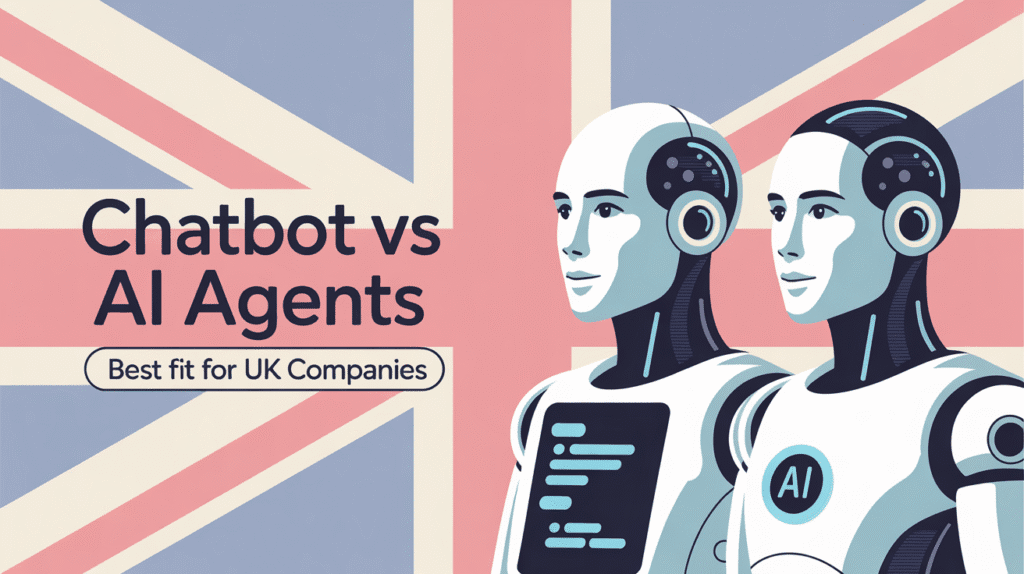The cost of AI automation for SMEs UK has become a pressing question as businesses navigate the digital transformation landscape in 2025. With nearly 40% of UK small and medium-sized enterprises planning to invest in artificial intelligence this year, understanding the true financial commitment behind these technologies is no longer optional but it’s essential for survival. While competitors automate their workflows and reduce operational costs by up to 30%, businesses that delay risk losing market share to more agile rivals who are already reaping measurable benefits.
The reality is both challenging and encouraging. AI implementation costs range significantly depending on scope and complexity, but the entry barriers have never been lower. What was once reserved for large corporations with substantial technology budgets is now accessible to SMEs through subscription-based models, cloud platforms, and scalable solutions. The question is no longer whether your business can afford AI automation, but whether it can afford to continue without it.
Understanding AI Automation Pricing UK: Breaking Down the Investment
When evaluating AI solutions cost UK business leaders often make a critical mistake. They are focusing solely on software licensing fees. Research consistently shows that platform licenses represent only 30-50% of total implementation expenditure. The remaining investment covers integration, training, and change management, the elements that determine whether your AI project succeeds or joins the 70% that fail to reach production.
The cost structure breaks down into three primary components. Software and licensing fees include platform subscriptions, API usage charges for services like ChatGPT or Claude, and ongoing maintenance costs. Integration and implementation expenses cover system connectivity, workflow configuration, data migration, and initial setup. Finally, training and adoption investments encompass staff education, change management programmes, and ongoing support requirements.
AI Implementation Cost for SMEs: What Really Drives the Price
Understanding what influences AI implementation cost for SMEs helps businesses budget accurately and avoid costly surprises. Several factors determine your final investment, each requiring careful consideration during planning stages.
Project scope and complexity significantly affect pricing. A simple customer service chatbot handling routine inquiries costs substantially less than a comprehensive system integrating predictive analytics across sales, inventory, and finance departments. The number of processes being automated, data volumes involved, and required customisation levels all impact the bottom line.
Integration complexity presents another cost variable. Businesses operating legacy systems or custom databases face higher integration expenses than those using modern, cloud-based platforms.
Industry-specific requirements also influence costs. Regulated sectors such as financial services, healthcare, and legal practices need additional compliance features, data protection measures, and audit capabilities. These specialised requirements increase both implementation costs and ongoing maintenance expenses.
The human element represents perhaps the most underestimated cost driver. Successful AI adoption requires comprehensive staff training, clear communication about workflow changes, and ongoing support during the transition period.
AI Automation ROI for SMEs: Quantifying the Returns
Whilst implementation costs warrant careful consideration, AI automation ROI for SMEs tells a compelling story that justifies the investment. UK businesses successfully deploying AI solutions report measurable improvements across multiple operational areas, with many achieving full payback within four to twelve months.
Cost reduction emerges as the most immediate benefit. SMEs implementing AI workflow automation report operational cost savings of 20-40%, with some achieving reductions up to 30% across their entire operation. A Birmingham engineering firm saved £100,000 annually through predictive maintenance AI that prevented equipment failures. A retail chain automated inventory forecasting and customer engagement, reducing costs by £42,000 yearly whilst improving stock accuracy by 31%.
Time savings deliver equally impressive results. Processes that traditionally consumed days or weeks now complete in seconds through intelligent automation. Data entry tasks that wasted 15-20 hours weekly disappear entirely. Invoice processing, expense tracking, and report generation that drained finance teams’ capacity now happen automatically, reducing manual processing time by up to 45%.
Revenue enhancement represents another critical benefit. AI-powered lead generation tools deliver returns averaging 280% within six months for UK SMEs. Businesses implementing AI for sales automation see improved conversion rates, faster quote-to-cash cycles, and enhanced customer engagement. One 60-employee B2B services firm freed £150,000 in working capital by reducing their quote-to-cash cycle from 15 days to mere hours.
The numbers speak clearly: successful implementations deliver £3.70 return for every pound invested. Well-run AI projects typically achieve productivity gains between 27% and 133%, with service sector businesses seeing particularly strong results.
Affordable AI Services UK: Starting Small and Scaling Smart
Accessible affordable AI services UK have transformed the adoption landscape, enabling businesses of all sizes to implement intelligent automation without enterprise budgets. The key lies in strategic implementation rather than comprehensive deployment from day one.
AI integration for small businesses UK succeeds when following a structured approach. Begin by identifying high-impact processes consuming excessive time or prone to errors such ascustomer support, invoicing, inventory management, and marketing campaigns represent prime candidates. Define clear, measurable objectives for each process, whether reducing costs, accelerating turnaround times, or enhancing customer satisfaction.
SME automation budget planning requires realistic expectations about timelines and resources. Allocate 40% of your budget to integration and technical implementation, 30% to software and licensing, 20% to training and change management, and 10% to contingency reserves. Plan for six to twelve months to achieve meaningful ROI on productivity tools, with customer service automation typically showing returns within four to eight months.
Small Business Automation UK: Overcoming Barriers to Entry
Despite compelling benefits, many small business automation UK initiatives stall due to perceived obstacles. Understanding and addressing these barriers enables successful implementation where others fail.
Cost concerns top the list of adoption barriers, with 30% of micro-businesses citing expense as their primary hesitation. However, this perception often stems from outdated assumptions about AI pricing. Modern subscription models provide enterprise capabilities for £20 monthly or less, with many platforms offering free tiers for basic functionality. The actual barrier isn’t affordability but it’s understanding which solutions deliver value at which price points.
Technical complexity represents another common concern, particularly among businesses lacking dedicated IT resources. Today’s no-code AI platforms eliminate this obstacle, providing visual workflow builders and pre-configured templates requiring no programming knowledge.
Knowledge gaps and uncertainty about where to begin prevent many businesses from taking the first step. Moreover, Government initiatives like the UK’s AI Action Plan also offer resources and support for businesses embarking on digital transformation journeys.
Cost-Effective AI Tools UK: Making the Investment Decision
Selecting appropriate cost-effective AI tools UK requires balancing capabilities, costs, and implementation complexity against your specific business requirements and growth trajectory. Several considerations guide successful decision-making.
Evaluate vendors based on total cost of ownership rather than headline subscription prices. Factor in integration expenses, training requirements, ongoing support costs, and potential customisation needs. Request detailed breakdowns showing all implementation phases and associated costs before committing to any solution.
Consider the vendor’s track record with similar businesses in your sector. Case studies, client testimonials, and industry recognition provide valuable insights into real-world performance. Request references from companies matching your size, industry, and technical sophistication to verify claims about ease of implementation and time to value.
AI Adoption Cost Analysis: The True Price of Inaction
Whilst organisations carefully analyse AI adoption cost analysis, few adequately assess the mounting costs of maintaining the status quo. Manual processes aren’t free but they impose substantial, often hidden expenses that compound over time.
Operational inefficiency drains resources through wasted staff hours on repetitive tasks, error correction consuming productive time, and delayed decision-making based on outdated information. These inefficiencies translate directly to inflated operational expenses, slower service delivery, and frustrated employees unable to focus on strategic work.
Competitive disadvantage accumulates as AI-enabled rivals capture market share through superior efficiency, enhanced customer experiences, and faster innovation cycles. Businesses operating manual processes simply cannot match the speed, accuracy, and personalisation that automated competitors deliver consistently.
Taking Action: Your AI Automation Investment Roadmap
Understanding the cost of AI automation for SMEs UK provides the foundation for informed decision-making, but knowledge alone delivers no value. Successful businesses translate understanding into action through structured implementation approaches.
Begin with a comprehensive process audit identifying tasks consuming excessive time, generating frequent errors, or creating customer friction points. Document current costs associated with the processes like staff hours, error correction, customer complaints, and lost opportunities. This baseline establishes clear targets for measuring AI’s impact.
Define specific, measurable objectives for your initial AI implementation. Rather than vague goals like “improve efficiency,” set concrete targets such as “reduce invoice processing time by 40%” or “resolve 70% of customer inquiries without human intervention.” Measurable objectives enable accurate ROI calculations and justify expansion investments.
Start with a focused pilot project targeting a single, high-impact process. Successful pilots build organisational confidence, demonstrate tangible value, and provide practical experience before expanding to additional workflows. Customer service automation, email marketing, and invoice processing represent excellent starting points offering quick wins with manageable complexity.
The future belongs to UK SMEs that embrace AI automation strategically, starting with manageable investments and scaling based on proven results. The cost of AI automation for SMEs UK has never been more accessible, the tools never more capable, and the competitive imperative never more urgent. The question is not whether to invest in AI automation, but how quickly you can implement solutions that position your business for sustainable growth in an increasingly automated marketplace.
Transform your operations, reduce costs, and outpace competitors by making AI automation an immediate priority. The businesses thriving in 2026 will be those that took action yesterday and don’t let another day of manual inefficiency erode your competitive position.




